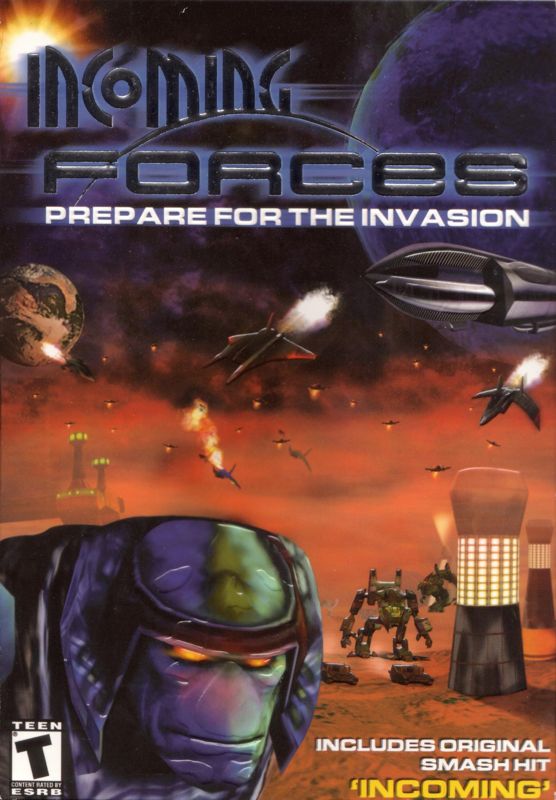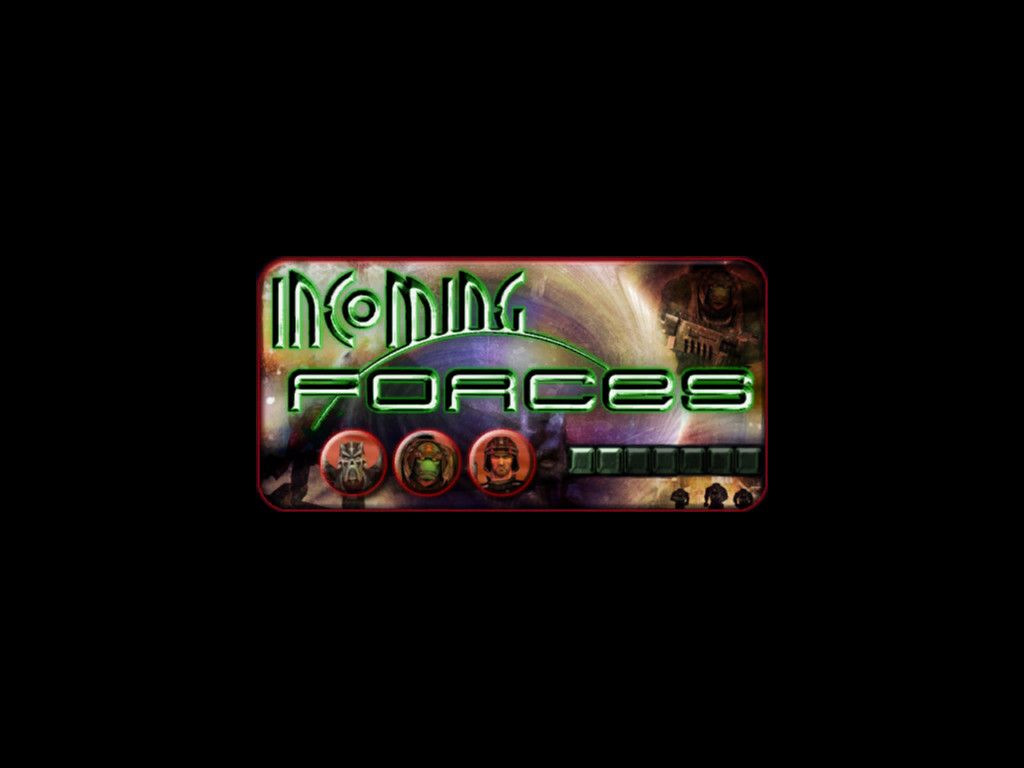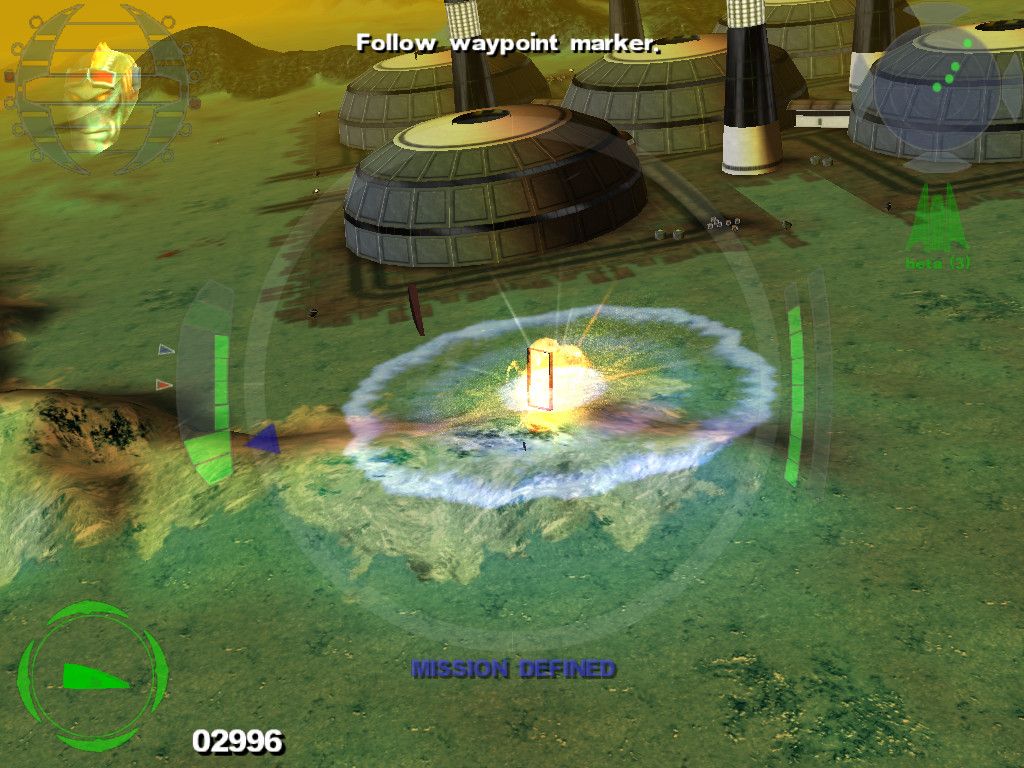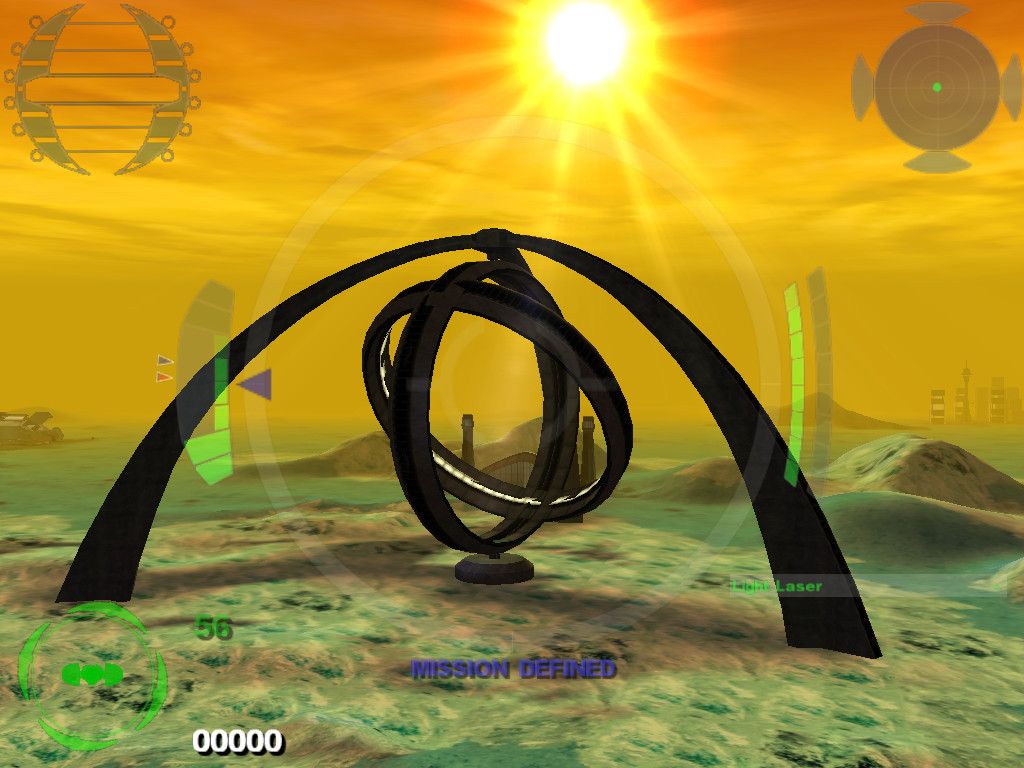Retro Replay Review
Gameplay
Incoming Forces builds on the arcade-style vehicular combat of its predecessor by placing you in command of a versatile arsenal of fighters, bombers, and heavily armed tanks. Each mission tasks you with completing a linear series of secondary objectives—ranging from escorting friendly convoys and defending vital installations to outright destroying waves of alien warships. The pacing is brisk, with new challenges introduced every few minutes to keep the adrenaline pumping.
One of the franchise’s more novel twists is the occasional ability to control alien units alongside your human forces. These segments add a fresh strategic layer, as you adapt to different weapon loadouts and flight characteristics unlike anything in your standard human fleet. Although these alien missions are relatively sparse, they give the overall campaign just enough variety to stave off monotony.
The game features sixteen core missions, each prefaced by an animated briefing that lays out objectives with clear visual cues. While there’s a tutorial mode to ease new players into the controls, the bulk of the experience lies in the single-player campaign. There’s no free-roam or skirmish option, so once you’ve finished a mission, replay value depends on your desire to refine your tactics or push for faster completion times.
Multiplayer is present but limited. You can engage in up to eight-player deathmatch or team deathmatch battles, but the lack of a built-in server browser means finding matches can feel cumbersome. Additionally, servers must choose between running ground or air modes, forcing players into one style of combat per session rather than allowing seamless combined-arms warfare.
Graphics
For a game released in the early 2000s, Incoming Forces delivers crisp, colorful visuals that still hold up reasonably well on modern hardware. The environments are varied—icy wastelands, molten volcanic fields, and alien cityscapes—which helps keep each mission visually distinct. Texture detail on vehicles and terrain is solid, if not exceptionally high-resolution by today’s standards.
Dynamic lighting and particle effects add flair to explosions, weapon blasts, and atmospheric phenomena such as dust storms or swirling nebulae in orbital levels. The animated briefings are rendered in full 3D, lending a cinematic feel to mission introductions and keeping players engaged before the action begins.
On the downside, draw distances can be limited, leading to pop-in of distant objects, and the polygon counts of the ships and ground units are noticeably low compared to modern titles. If you’re accustomed to ultra-high-definition textures and advanced shaders, some of the visual elements might feel dated. However, the art design remains appealing, and performance tweaks allow the game to run smoothly on modest rigs.
Story
Set twenty years after the events of Incoming: The Final Conflict, Incoming Forces flips the script by casting humanity as the aggressor. Fearing a retaliatory strike from defeated alien invaders, Earth’s governments unite to form a preemptive armada, determined to root out any potential threats across the galaxy. This premise injects a darker edge into the series’ lore, where paranoia and a thirst for revenge drive humanity to become conquerors themselves.
The narrative is delivered almost entirely through animated 3D briefings. While these cutscenes effectively set the stage for each mission and provide context for your objectives, they rarely delve into character development or deeper motivations. As a result, the story feels more like a framing device for the action than a richly woven tale with emotional stakes.
Despite its brevity, the campaign does portray a coherent progression—from Earth’s defensive perimeter to distant alien worlds—allowing you to feel like part of an interstellar crusade. If you’re looking for a nuanced sci-fi epic or memorable protagonists, you may find the narrative thin. However, fans of straightforward military sci-fi will appreciate the clear “us versus them” tension that drives each engagement.
Overall Experience
Incoming Forces offers a blend of fast-paced vehicular combat and light strategic command that will appeal to players seeking action-packed missions without the micromanagement of a full-fledged real-time strategy game. The campaign’s linear design ensures you’re never unsure of your next objective, though it does limit freedom and replayability beyond mastering each mission.
Visually, the game remains charming despite some technical shortcomings typical of its era. The variety of environments and the dynamic effects help maintain immersion, even if modern gamers may miss higher-fidelity models and textures. Performance is generally solid, making it accessible on a wide range of systems.
Multiplayer adds some longevity, but its usefulness is hampered by the lack of matchmaking features and the forced choice between ground or air modes. If you have a dedicated group of friends willing to coordinate via external tools, those eight-player deathmatches can be a blast; otherwise, the online component may go largely unused.
Ultimately, Incoming Forces stands as a worthy sequel that refines the arcade combat formula of the original while injecting just enough new mechanics—like alien unit control—to keep things interesting. It may not break new ground in narrative depth or multiplayer innovation, but for fans of high-octane sci-fi shooters, it delivers a memorable set of missions and a satisfying dose of intergalactic warfare.
 Retro Replay Retro Replay gaming reviews, news, emulation, geek stuff and more!
Retro Replay Retro Replay gaming reviews, news, emulation, geek stuff and more!









Reviews
There are no reviews yet.